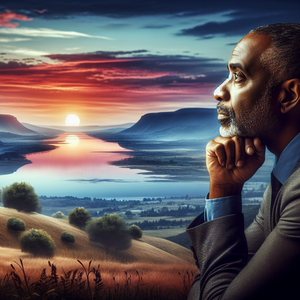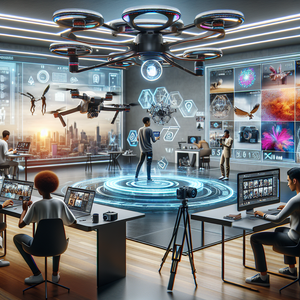Portraits in Darkness: The Rise of Low-Key Lighting in Photography

Low-key lighting is defined by its emphasis on shadows and dark areas, creating a stark contrast between light and dark. This technique is particularly effective in portraiture, where the interplay of light and shadow can bring out the subtleties of a subject's expression and mood. The allure of low-key lighting lies in its ability to convey mystery and drama, drawing the viewer into the photograph and inviting them to explore the hidden depths of the image. Photographers who specialize in low-key lighting often describe it as an intimate dance between light and shadow. By strategically placing light sources, they can sculpt the subject's features, emphasizing certain areas while shrouding others in darkness. This selective illumination allows for a focus on the subject's emotional essence, turning a simple portrait into a powerful narrative. Professional photographers understand that lighting is crucial, often more so than camera quality, in creating impactful images.
Capturing Emotion and Mood
One of the primary reasons photographers are drawn to low-key lighting is its capacity to evoke strong emotions. The shadows and highlights create a cinematic quality, reminiscent of classic film noir, where every glance and gesture seems imbued with significance. This technique is particularly effective in black-and-white photography, where the absence of color further enhances the dramatic interplay between light and shadow. To capture the desired mood, photographers often employ a single light source, such as a softbox or a simple lamp, positioned at an angle to cast long shadows. This setup not only highlights the subject's features but also creates an atmosphere that can range from somber to sensual, depending on the intensity and direction of the light. The result is a portrait that feels alive with emotion, inviting the viewer to connect with the subject on a deeper level.
The Technical Side of Low-Key Photography
While the artistic vision is crucial, mastering the technical aspects of low-key lighting is equally important. Photographers must have a keen understanding of exposure, contrast, and composition to effectively execute this style. The key is to manage the light so that it highlights the subject without overpowering the shadows, maintaining a delicate balance that enhances the overall mood of the image. Post-processing techniques also play a significant role in low-key photography. Photographers often spend considerable time in editing software, fine-tuning the contrast and adjusting the shadows to achieve the desired effect. This process requires a careful eye and a steady hand, as even slight adjustments can dramatically alter the mood and impact of the final image.
Artists Embracing the Darkness
Many contemporary photographers have embraced low-key lighting, each bringing their unique perspective to the technique. Renowned portrait photographers like Sebastian Kim and Platon have utilized low-key lighting to create iconic images that capture the essence of their subjects. These artists often cite the ability to tell a story through shadow and light as a primary reason for their affinity for this style. In addition to seasoned professionals, emerging photographers are also exploring low-key lighting, using it as a means to differentiate their work in a saturated market. For these artists, low-key photography offers a canvas upon which they can experiment with new ideas and push the boundaries of traditional portraiture.
The rise of low-key lighting in portrait photography is a testament to the enduring power of light and shadow to evoke emotion and tell compelling stories. This technique, with its rich history and modern adaptations, continues to captivate photographers and viewers alike. As artists explore the depths of darkness, they reveal the hidden beauty within, transforming ordinary portraits into extraordinary works of art. In a world often obsessed with brightness and clarity, low-key lighting reminds us of the profound impact of shadows, inviting us to see beyond the surface and discover the soul of the subject.
Portrait Photographer
Often hired by photography studios, media agencies, or work as freelancers
Job Description
Specializes in capturing the essence of individuals or groups through portraiture.
Utilizes advanced lighting techniques, such as low-key lighting, to enhance mood and emotion.
Requires proficiency in DSLR cameras and post-processing software like Adobe Lightroom and Photoshop.
Photo Editor
Employed by magazines, newspapers, and online media platforms
Job Description
Edits and enhances photographs to meet artistic and publication standards.
Expert in post-processing techniques, including adjusting contrast and exposure for low-key photography.
Collaborates with photographers to achieve a cohesive artistic vision.
Lighting Technician
Work opportunities in photography studios, film production companies, and event planning firms
Job Description
Designs and sets up lighting for photography and film shoots.
Knowledge of different lighting setups, including low-key lighting, to achieve desired visual effects.
Works closely with photographers to ensure proper lighting balance and atmosphere.
Creative Director - Visual Arts
Typically employed by advertising agencies, fashion brands, and creative consultancies
Job Description
Leads creative projects, developing visual concepts and strategies for photo shoots.
Guides the use of lighting techniques, including low-key lighting, to align with project themes.
Requires experience in art direction and strong leadership skills.
Commercial Photographer
Often work with advertising agencies, brands, and e-commerce platforms
Job Description
Focuses on capturing images for commercial use, such as advertisements and product photography.
Employs various lighting techniques, including low-key, to highlight products and evoke desired emotions.
Requires a strong portfolio and experience with diverse photography styles.


